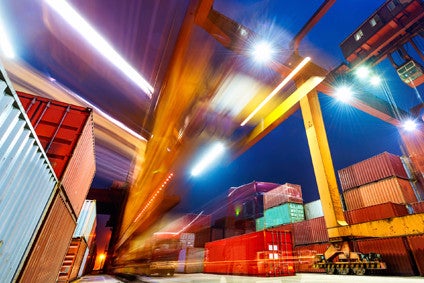With the Trump Administration mulling up to 25% additional duties on all US imports from China, Matthijs Crietee, secretary general of the International Apparel Federation (IAF), argues that even the threat of new trade barriers is likely to have a long-term impact on complex global clothing supply chains.
An earlier threat to impose tariffs on Mexico – another major US supplier of apparel – over concerns about illegal immigration, was not carried out but showed that tariffs may be increased based even on non-trade related arguments.
The International Apparel Federation (IAF) is a non-political organisation representing the global apparel industry and does by definition not comment on bilateral trade matters. However, in this case the ramifications of this trade political sabre rattling have the potential to hurt the entire industry across the globe.
When a country with such a huge market as the US takes or threatens to take such extreme trade policy actions it creates complex shock waves, potentially urging apparel importers to tread more carefully when making sourcing decisions.
The continuous threat of US tariffs hanging above the market is potentially pushing the whole industry away from “improving production” and back towards “moving production”
It goes beyond obviously hurting Chinese and Mexican factories that have invested in raising their productivity by automation and organisational improvements. The continuous threat of US tariffs hanging above the market is potentially pushing the whole industry away from “improving production” and back towards “moving production.”
It is creating incentives to be a footloose industry rather than an industry that invests in people and in innovation. It is creating uncertainty in the world of apparel sourcing where stability is what is needed. In the words of an IAF Board Member, it pushes the industry in a ‘Jurassic’ direction.
How well do you really know your competitors?
Access the most comprehensive Company Profiles on the market, powered by GlobalData. Save hours of research. Gain competitive edge.

Thank you!
Your download email will arrive shortly
Not ready to buy yet? Download a free sample
We are confident about the unique quality of our Company Profiles. However, we want you to make the most beneficial decision for your business, so we offer a free sample that you can download by submitting the below form
By GlobalDataCollateral damage
Representing the interests of apparel brands, retailers and manufacturers, the IAF’s mission is to unite all stakeholders of the fashion and apparel industry to create smarter, stronger and more sustainable supply chains.
With a membership spanning all continents, IAF members’ collaboration is the embodiment of the industry’s belief that collaboration between brands and retailers and manufacturers is a cornerstone for business improvement.
Following this it is also the cornerstone for a reduction of environmental pressure and an improvement of working conditions. Collaboration hinges on stable and longer business relations, especially where investments are concerned.
The industry has been taking strong and positive steps in the direction of investments in supply chain improvements. It would be very unfortunate if (trade) policy disputes in which the apparel industry is not directly involved at all would frustrate these positive developments.
There has always been a double-sided relationship between the apparel industry and trade policy. Relatively high tariffs on apparel make tariff preferences very powerful instruments, and numerous countries have been able to build an apparel industry partly based on tariff advantages.
On the other hand, importers always have to find ways to deal with the risk of losing preferences unexpectedly.
But it is the current combination of the magnitude of the proposed tariffs, the sheer scale of the trade they affect, and the divergence from the rules of the international trade game that is so extraordinary and now potentially affecting the entire industry.
It is unavoidable that the threat – let alone the putting into place of additional US tariffs vis a vis the largest garment manufacturing countries – will have negative effects on the global and complex apparel supply chains.
We hope that the industry’s positive move towards greater investments in its supply chains will prevail, spurred on by fast developing enabling technologies. But it is a harsh reality that one of the largest industries on the planet might find itself facing “collateral damage” in the form of headwinds against investments in people and planet.



